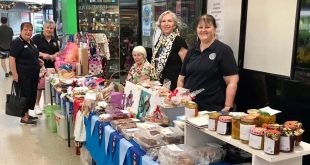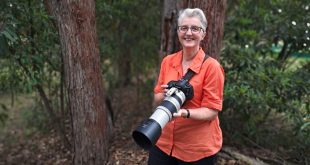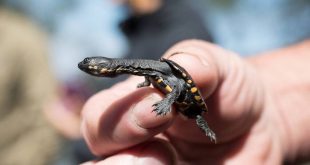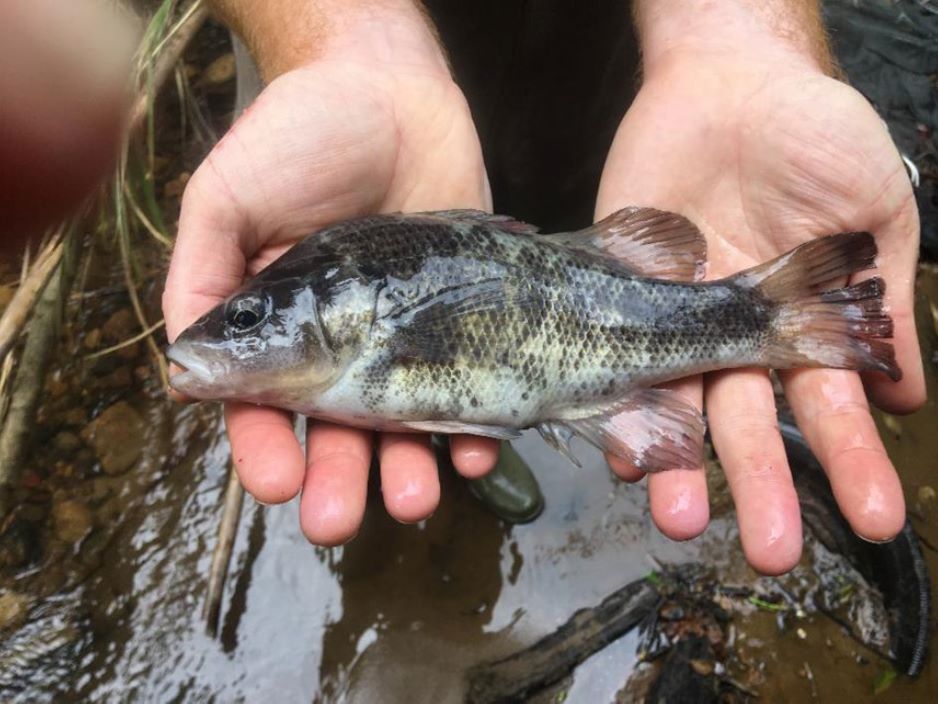
A mature Blue Mountains Perch. (Photo: NSW Fisheries)
Story by Julie Nance
The Blue Mountains Perch may not be as adorable as a cuddly koala, but it is also an endangered animal in need of awareness and support. Populations of the freshwater fish have been hit hard by drought, fire and flooding over the past few years. A NSW fisheries study, while sobering reading, is helping experts develop a plan to save the fish.
Key Points:
- The Blue Mountains Perch has dwindled in numbers and become extinct in parts of Greater Sydney, but populations are hanging on in the Blue Mountains.
- We can all play a part in protecting the fish by reducing erosion on our properties and highlighting to others that it exists and it needs our help.
A couple sits on a large rock enjoying a romantic picnic beside a beautiful Blue Mountains waterhole. Little do they know they are in the presence of an ancient and beautiful animal.
The Blue Mountains Perch lies camouflaged at the bottom of creeks and deep water holes during the day. In the night-time it is active; its big eyes seeking out water bugs and smaller fish to feast on.
While a successful predator, the Blue Mountains Perch has been at the mercy of environmental forces that have treated it very harshly.
According to a NSW Fisheries study, Blue Mountains Perch populations were under immense stress from a prolonged drought from 2017 to 2019. Approximately half of their habitat was severely impacted by the 2019/20 “Black Summer” bushfires that followed.
In February 2020 heavy rains throughout the Hawkesbury-Nepean catchment caused severe runoff and hillslope erosion. Large volumes of sediment were deposited in waterways, threatening aquatic species with ongoing habitat loss. It is thought the Blue Mountains Perch was further impacted by these rainfall events.
The study, ‘Drought, fire, and flood: A population assessment of the Blue Mountains perch (eastern Macquarie perch) ….’ charts the findings of a comprehensive assessment of the distribution of Blue Mountains Perch, mainly between 2021 and 2022. A total of 88 sites were targeted within the Hawkesbury-Nepean and Hunter catchments.
The surveys involved the use of electrofishing: passing an electrical current through water, which temporarily stuns fish so they can be caught, processed and released. Netting was also used as well as environmental DNA (eDNA) analysis. This new technology finds traces of DNA in the water as a way of knowing if a species is present, without catching or disturbing it. In total, 27 Blue Mountains Perch were captured, ranging in length from a 30 mm juvenile to a 235 mm sexually mature fish.
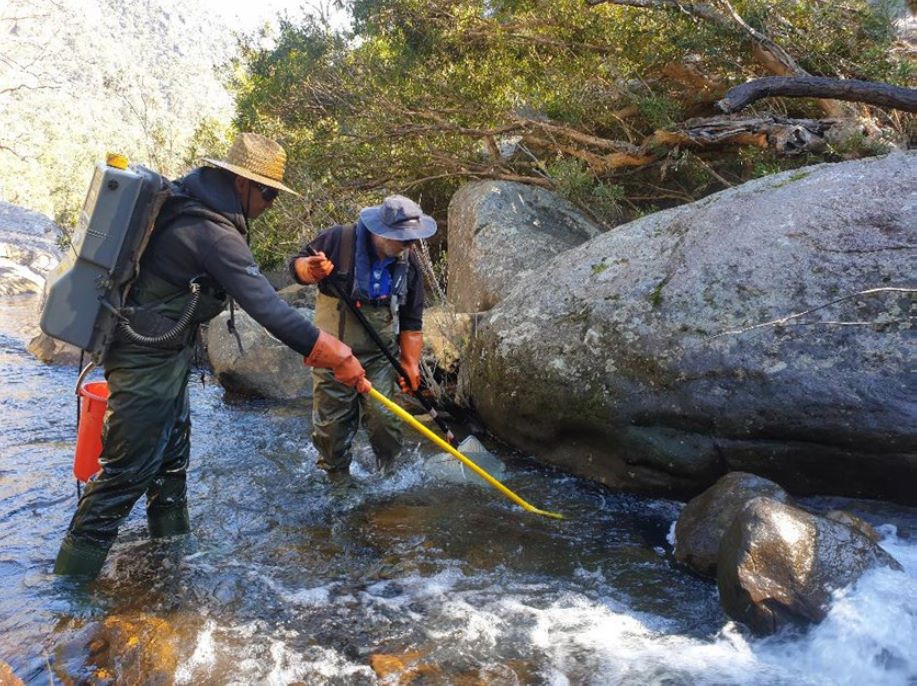
NSW Fisheries experts electrofishing for Blue Mountains Perch. (Photo: NSW Fisheries)
Blue Mountains Perch were absent from seven of the 20 water bodies that the species was known to occur in prior to the 2017 to 2019 drought, 2019/20 bushfires and 2020 flooding. This represents the potential loss of Blue Mountains Perch from approximately 35 per cent of sampled water bodies known to previously contain the fish.
One of the Perch’s biggest advocates is Will Goodwin, a member of Blue Mountains City Council’s Healthy Waterways team.
“They are a really pretty fish; they’ve got this beautiful, mottled brown and silvery grey on the side and they live in such beautiful habitat,” he says.
“We literally have an animal named after the Blue Mountains that pretty much none of us have heard of. Many of us have come far closer than we realise at Blue Mountains swimming holes.
“We have the power to really stand up for it. We could be looking at an extinction here, but if the right things are done, we can see the Perch completely bounce back and it can be a huge success story. The biggest thing the Blue Mountains Perch needs is advocacy.”

A juvenile Blue Mountains Perch. (Photo: NSW Fisheries)
Will says the Perch study is helping Blue Mountains City Council better prioritise its conservation work, including improving waterway health. He says a Council Biodiversity Strategy will soon be on public exhibition.
“Based on the map/site coordinates in the study, I’ve been able to determine which sites fall in our LGA and I’m really happy to see that a number of them returned positive results for Blue Mountains Perch,” Will says. “Populations are hanging on in the Blue Mountains, but they need help.”
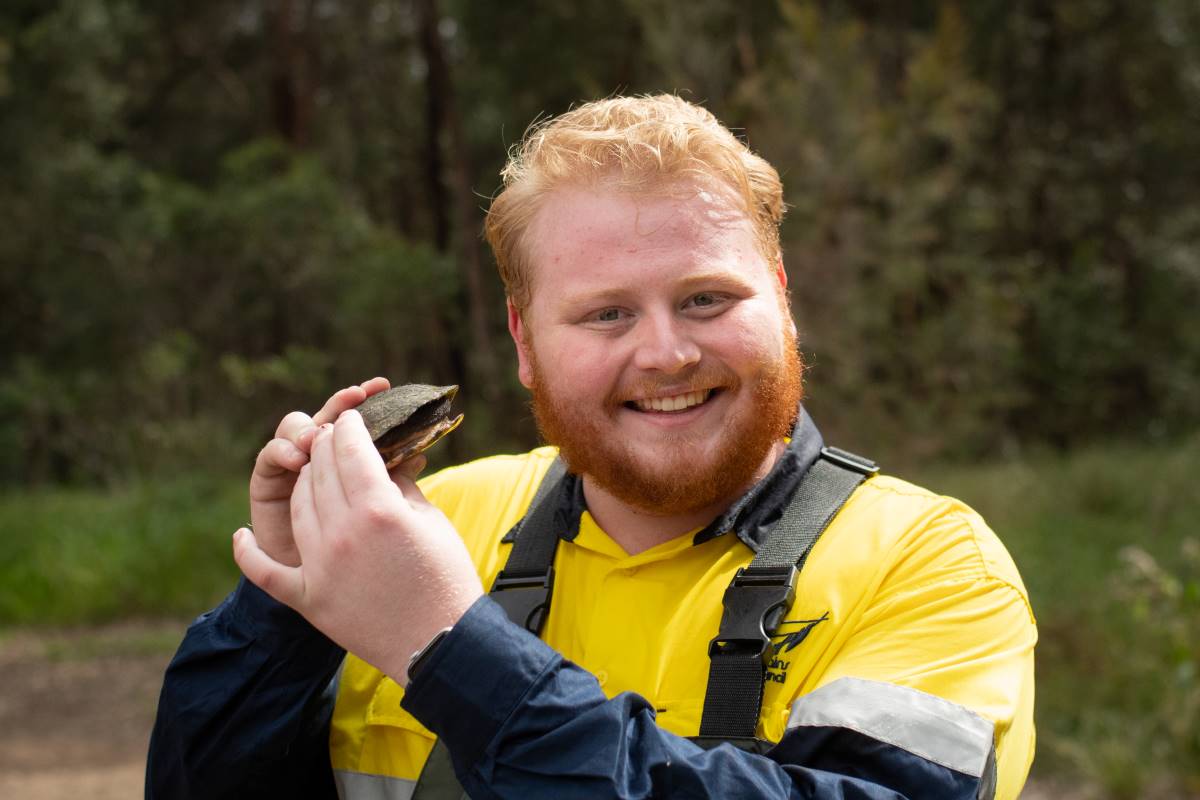
Healthy Waterways team member Will Goodwin, who is passionate about freshwater fish (and turtles). (Photo supplied)
The report says there are new threats to the Blue Mountains Perch. This includes alien species invading their habitat e.g. Redfin perch; diseases such as Epizootic Haematopoietic Necrosis Virus (EHNV); and potential habitat loss from possible raising of Warragamba Dam and mining within the Nepean River sub-catchment.
Long-term monitoring (5+ years) of the Blue Mountains Perch has been recommended in the report, as well as key habitat remediation activities including desilting, riparian improvements, bank stabilisation, and the restoration and conservation of in-stream rocky habitat.
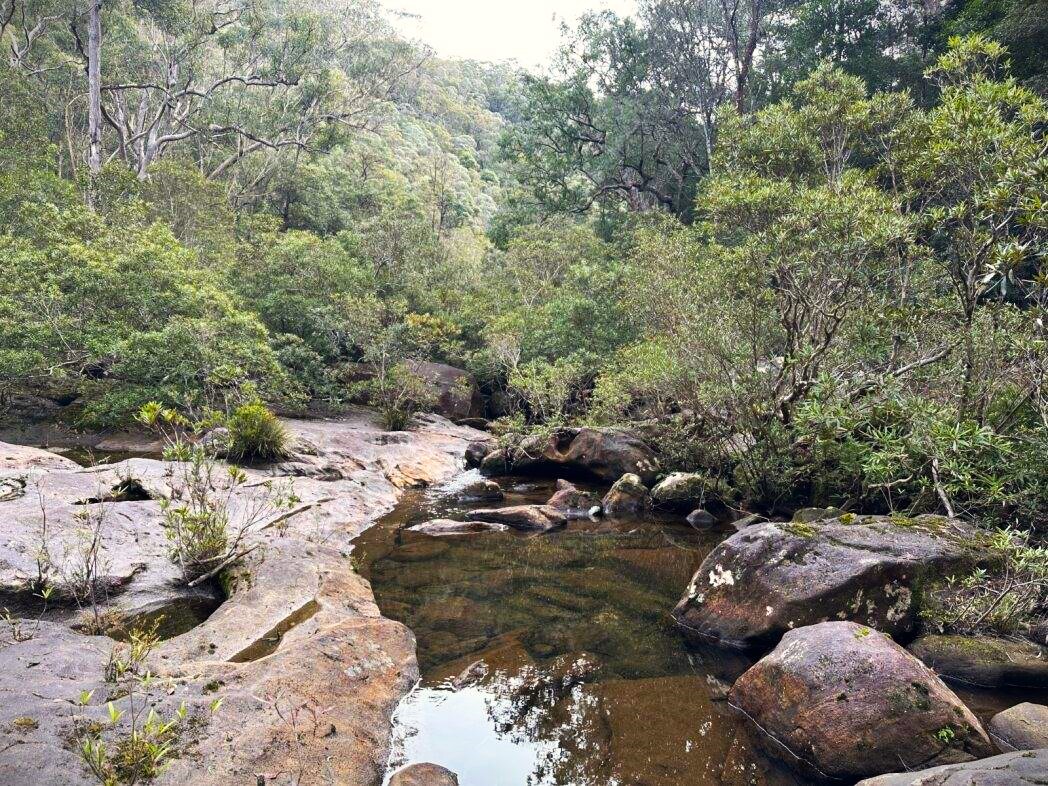
Habitat where the Blue Mountains Perch is believed to occur. (Photo supplied)
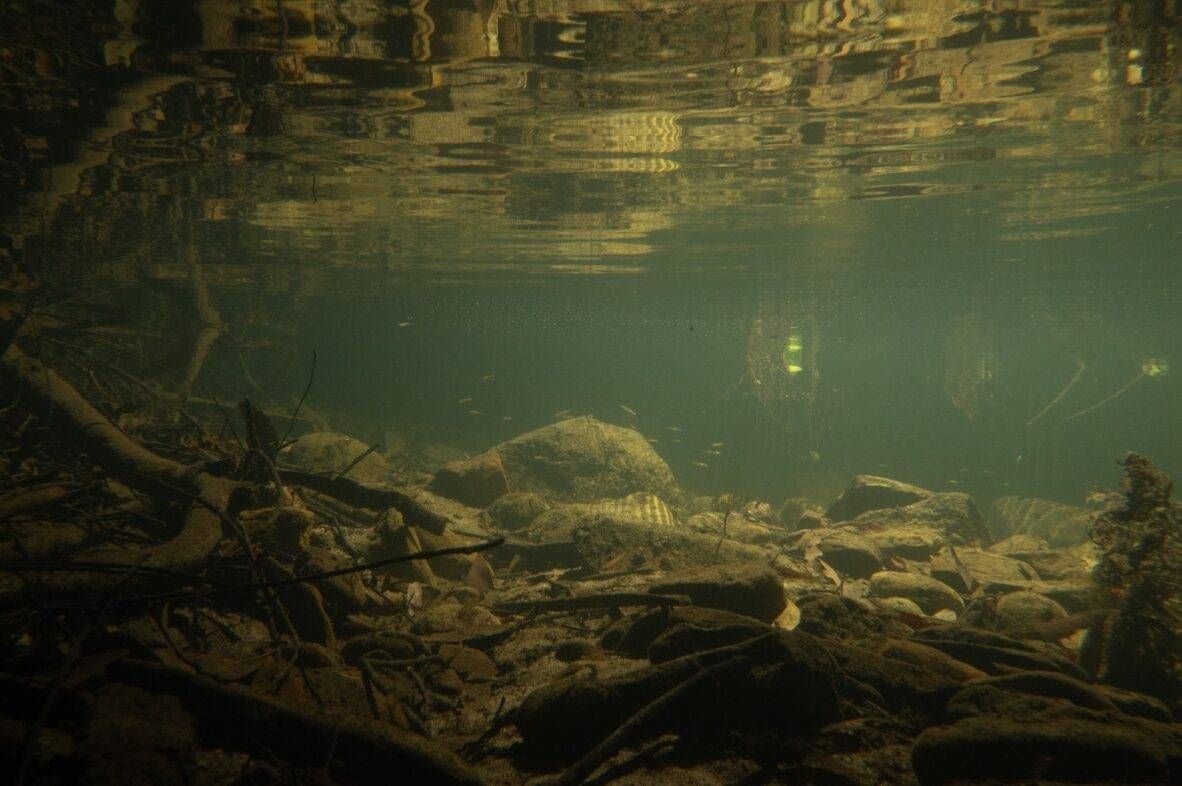
Will: “This is a fairly healthy creek in a Blue Mountains Perch catchment. I took this underwater photo at night, using a flash.” (Photo: Will Goodwin)
The report recommends: “Urgent management actions are required to protect Blue Mountains Perch from further decline and improve the species’ resilience.”
Will says a lot of conservation activities already carried out in the Blue Mountains has indirectly benefited the species, including protecting and restoring creeks.
“In a happy accident, our existing stormwater works such as the Glenbrook raingardens project are our biggest tool in our tool belt to help the Blue Mountains Perch,” Will says. “Moving forward, we’re looking at prioritising Blue Mountains Perch catchments for future raingarden projects and funding.”
The Blue Mountains Perch was long thought of as a variation of the Macquarie Perch, a freshwater fish native to cooler, mid-altitude areas of south-eastern Australia. However, past studies, both genetic and morphological (looking at the form and structure of an organism or any of its parts), are providing strong support for it to be classified as a separate species.
“That’s part of the problem and part of the mystery of the fish – it used to be considered Macquarie Perch. Because it doesn’t officially scientifically exist as its own species, it is difficult to protect it.” – Will Goodwin
When you listen to Will enthusiastically talk about the Blue Mountains Perch, you can see why he has such a strong desire to help it. He highlights their “clever strategy” to keep their eggs safe, laying them at the top of a fast-flowing stream.
“As the eggs bounce along in the current, they get wedged amongst the rocks and pebbles,” Will says. “The rocks keep predators out, and the constant flow of water keeps them clean and well oxygenated.”
Will says unfortunately there is now far too much sediment in our streams.
“It comes from our backyards and construction sites, but also from the erosion of creeks as they get blasted with urban stormwater,” he says.
“Even the fast-flowing sections of streams get covered with this blanket of sand on the bottom. Without that rocky habitat, there’s no way for this fish to breed”.
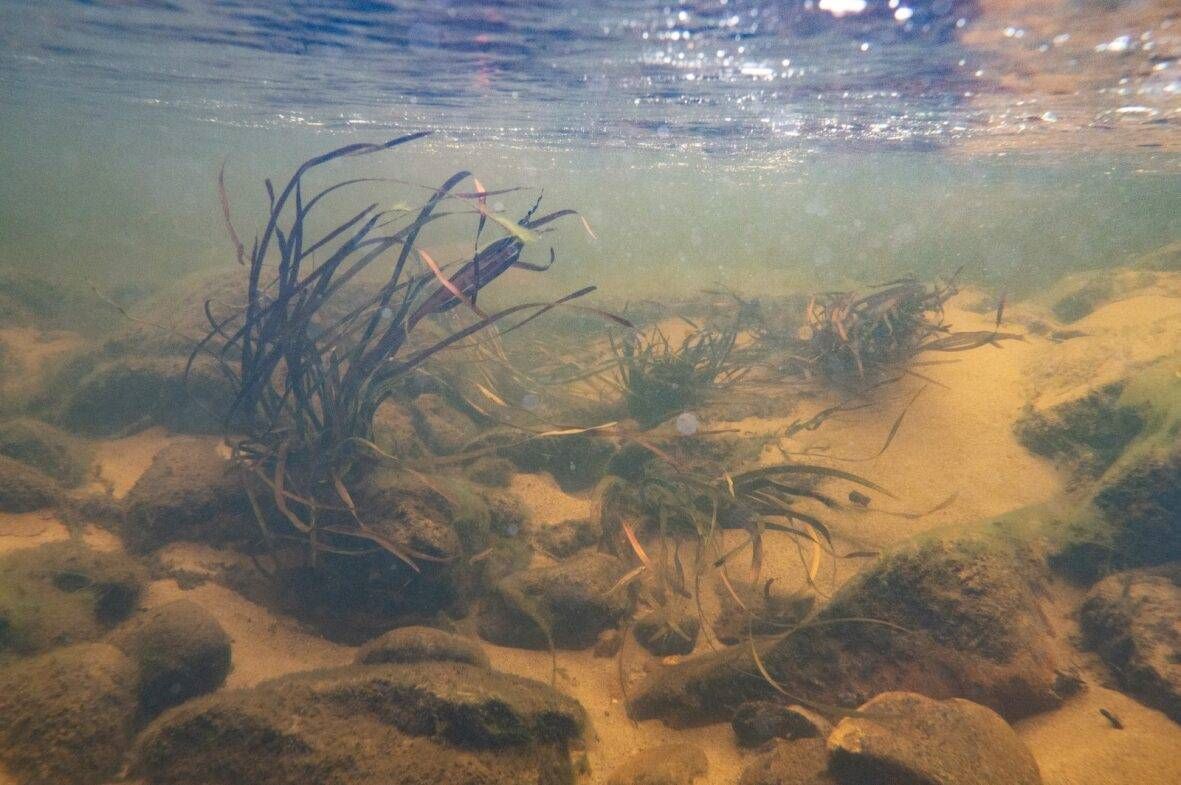
Known Blue Mountains Perch habitat that has been blanketed by sediment. It’s a fast-flowing riffle, so it should naturally have a nice rocky bottom. All the little cracks have been filled in. (Photo: Will Goodwin)
So how can we help?
Will says individuals shouldn’t feel powerless to assist the Perch. He cites advocacy for koalas and the Regent Honeyeater as examples of people power making a positive difference.
“It’s about recognising the beauty of this fish and getting people behind it,” Will says.
“No one is going to protect something they haven’t even heard of, and the Blue Mountains Perch has missed out on much needed protection because of that. Just by spreading the word, you can make a huge difference for this fish.”
Take Action:
- Try to reduce erosion: look out for any bare earth on your property, and keep it covered with plants or mulch.
- Tell someone: the more people that know about this species, the more protection it will get. Sharing this story, or just mentioning it to a friend or family member is one of the best things you can do for it.
- Read about a stormwater treatment initiative at Glenbrook featuring the type of raingarden that is ultimately helping the Blue Mountains Perch: It Takes a Village to Care for a Creek.
Share this article:
This story has been produced as part of a Bioregional Collaboration for Planetary Health and is supported by the Disaster Risk Reduction Fund (DRRF). The DRRF is jointly funded by the Australian and New South Wales governments.
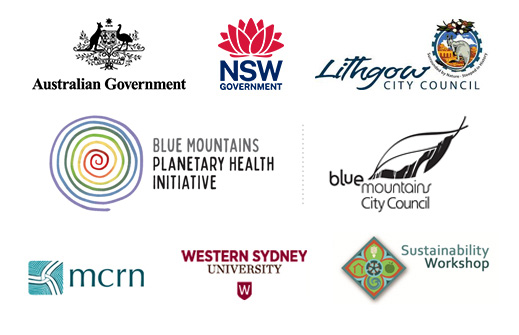
More from around the region
A small group of Blue Mountains women is helping local women survive and thrive and also contributing to improve maternal and newborn survival in developing countries. Assembling birthing kits for women in remote locations is just one of the many ways the @zontaclubbluemountains is empowering and supporting women, both abroad and at home. Read more in Lower Mountains Local News (link in profile)
https://lowermtnslocalnews.com/zonta-blue-mountains/
#womensupportingwomen #maternalhealth #birthingkits #zontainternational #zonta #abetterworldforwomen #localaction #localactionglobalimpact #planetaryhealth
We are thrilled to announce that award-winning health writer and author Sophie Cousins will be leading the workshop: Our Community, Our Stories: Writing for Change from 2-5pm on Saturday 25 May at the Planetary Health Precinct. Sophie`s work has been published in the New York Times, London Review of Books, the Guardian, the Lancet, Meanjin and others. She also works as a public health consultant for the World Health Organisation. The workshop will be followed at 7pm by the launch of the Planetary Health Writers Network. Places are limited so bookings essential (link in profile): https://www.eventbrite.com.au/e/our-community-our-stories-writing-for-change-tickets-895548458547
#writingforchange #impactfulstories #solutionsjournalism #writingworkshop #planetaryhealth #changethestory #thenewsweneed #writersnetwork #bluemountains #katoomba
We`re thrilled to welcome Tamsyn McGrouther to our growing team of volunteer storytellers. She`s reporting on how the Springwood Lot Party transformed an underused space, the car park at Springwood Train Station, into a vibrant community space with food stalls, art opportunities and live music. Read more in Springwood Area Local News (link in profile) : https://springwoodlocalnews.com/springwood-lot-party-2024/
#changethestory #hyperlocalmedia #solutionsmedia #springwood #inspiringstories #planetaryhealth #bluemountains #localnewsmatters
What do tea, samurai clans, William McArthur, Benjamin Franklin, Vietnam and the Botanic Gardens at Mount Tomah have in common? Read our story in Blackheath Area Local News to explore the way camellias and cultures are woven together and why it’s important we think about conserving biodiversity as a global project implemented at a local level. (link in profile) https://blackheathnews.com/camellias-at-blue-mountains-botanical-garden/
@botanicsydney #botanicgardens #mountomahbotanicgardens #camellias #camelliasinensis #tea #samurai #bluemountains #themounts #biodiversity #planetaryhealth
Mushrooms are a hot topic at the moment with more and more research illuminating the essential role these organisms play in the health of the planet as well as the significant health and medicinal benefits they hold for humans. Belle Butler visited local mushroom grower, Alex Felix, at his farm in Lawson to talk about the mighty mushroom. Read more in Mid Mountains Local News (link in profile)
https://www.midmtnslocalnews.com/earthrising-mushroom-farm/
#mushroomgrowkit #mushrooms #fungi #growyourown #lawson #bluemountains
Mushrooms are a hot topic at the moment with more and more research illuminating the essential role these organisms play in the health of the planet as well as the significant health and medicinal benefits they hold for humans. Belle Butler visited local mushroom grower, Alex Felix, at his farm in Lawson to talk about the mighty mushroom. Read more in Mid Mountains Local News (link in profile):
https://www.midmtnslocalnews.com/earthrising-mushroom-farm/
#lawson #mushroomfarming #fungi #mushroomcompost #oystermushrooms #mushroomgrowkit #bluemountains
Maligned through the ages for their association with witchcraft, disease, drug use and poisonings, the fungus kingdom is gaining due credit thanks to ecologists, photographers and foragers. Read more in Katoomba Area Local News (link in profile):
https://www.katoombalocalnews.com/fungi-of-the-upper-blue-mountains/
#fungi #fungus #mycelium #fantasticfungi #bluemountains #planetaryhealth #katoomba #foraging #fungiforaging #fungiphotography #ecology
Yesterday we interviewed physicist Emeritus Professor Hans Coster at Middle Earth in Lithgow. He was in charge of the Sydney Chapter of the Club of Rome and we can`t wait to share with you everything we learnt when we visited him in the home he`s built into a hill in Lithgow. Subscribe to our newsletter via any of our news sites to make sure you get this story! Link in profile.
#nickelironbatteries #middleearth #planetaryhealth #hanscoster
Inspiring reading and a video of Harry Laing`s mesmerising performance of `Time of Fire` in the Blue Mountains Planetary Health newsletter (link in profile): https://bit.ly/3UyytbE
Subscribe to receive this fortnightly via any of our news sites:
Katoomba Area Local News: Fungi of the Upper Blue Mountains
Mid Mountains Local News: The Fun Guy: Earth Rising Mushroom Farm in Lawson
Blackheath Area Local News: A Carnival of Camellias: Beauty and Biodiversity at the Blue Mountains Botanic Garden
Springwood Area Local News: Springwood Lot Party: Transforming an Underused Space Into a Vibrant Community Event
Lower Mountains Local News: Women Helping Women to Survive and Thrive
Lithgow Local News: Fabulous Fungi in Lithgow & the Blue Mountains
@botanicsydney @zontaclubbluemountains
#fungi #fantasticfungi #camellias #zonta #camelliasinensis #springwood #harrylaing #timeoffire
With a bit of tweaking we can reduce how much we need to spend on water and energy. Blue Mountains libraries now stock free-to-borrow ‘My Energy and Water Saver’ kits that Blue Mountains residents can use to assess their homes for energy and water efficiency. Belle Butler borrowed one of the kits and discovered some room for improvement in her Lawson home. Read more in Mid Mountains Local News (link in profile) https://www.midmtnslocalnews.com/saving-power-with-take-home-kits/
@bluemountainscitycouncil
#energyefficiency #waterefficiency #savemoney #savetheearth #freeresource #librariesrock #takeaction #planetaryhealth
Blackheath Public School is providing hands-in-the-dirt lessons on how students can make their school more sustainable. From Crunch & Sip to Cluckingham Palace – literally! – organic waste makes the sunflowers shine and worms frolic in the fertile compost. Students will soon be eating spinach and cheese scrolls made by the canteen using garden produce, while parents report their children want to eat more vegetables. Read more in Blackheath Area Local News (link in profile): https://blackheathnews.com/sustainability-at-school/
blackheathpublic_pandc #blackheathpublicschool #blackeath #bluemountains #sustainableschools #schoolgardens #schoolgardensmatter #planetaryhealth
A fun day yesterday for @bluemountainsplanetaryhealth! In the morning we interviewed and filmed the young people in our Upcycling Fashion Skillshare program. They`re helping create the circular economy we need. In the afternoon we ran a workshop on media skills to help another group of young people learn how to create the news we need, and the news they want to see! They learnt how to use green screen and teleprompter technology as well as skills for interviewing and presenting the news. We`re looking forward to sharing the outcomes! Thank you @heli.jones @kalanigacon @kfmmedia #solutionsmedia #thenewsweneed #upcyclingfashion #planetaryhealth #skillshare #katoomba #bluemountains #pluriversity


